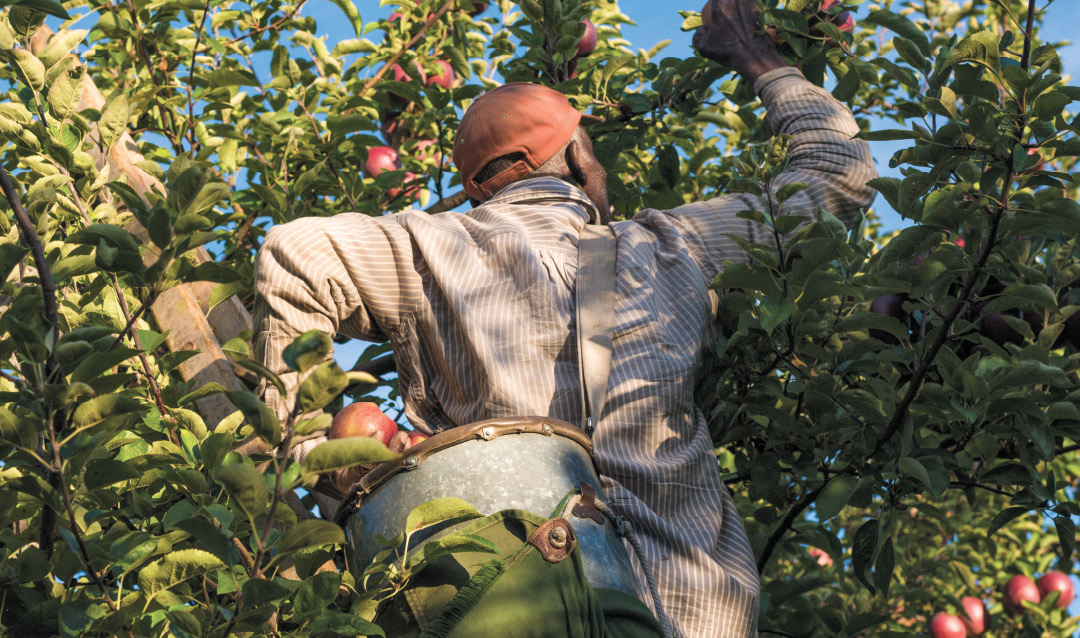In their analyses, Rahman and his colleagues examined local labor markets with differing potential for attracting immigrants. They looked at the past inflow of immigrants prior to 1980 and the presence of local networks of foreign-born people, which can ease new immigrants’ arrival. They also looked at whether the intensity of technological advancements had produced the same level of polarization among natives across different markets.
In regions of higher computer usage, the economists indeed found a polarization among native workers themselves—more held higher-end and lower-end jobs, fewer were semi-skilled.
“They’re bifurcating in a sense, but these are also the places that migrants tend to flow into,” Rahman says. “And what’s interesting, it’s actually mostly unskilled [immigrants] who are coming into these areas that have the higher usage of computers. It does make sense, because they complement what the semi-skilled and high-skilled workers are doing.”
In a key finding, Rahman and his colleagues determined that native employment and wage polarization are less pronounced in U.S. labor markets that had more access to immigrants.
Part of the reason, they say, is that immigrants drawn to growth areas fill many of the low-wage manual jobs, and thus, push native workers to higher achievements and higher wages among the wage distribution spectrum.
“Many natives benefit [from immigration],” says Rahman. “If you’re high-skilled, this is a good thing for you because the low-skilled immigrants help you, help even more as technology improves, and therefore your wages are going to go up. If you’re mid-skilled and you get to keep your mid-skilled jobs, that’s also good for you. As long as you have that security of keeping that position, then the computerization actually makes you more productive.”
Native workers and low-skilled, foreign-born workers complement each other, Rahman says.
As technologies grow, native workers need to use those technologies, while others need to buy the products that natives are producing. Further, households may find they need to hire au pairs or nannies to help them tend to their children. Expanding companies may need more workers to perform janitorial services in their buildings. Young professionals may demand greater services such as restaurant meals and evening shows. All these can be provided more cheaply by migrant workers.
“We still need people to take care of our children if we have two-income households,” Rahman says. “We still need people to pick produce from the fields, and do a variety of different things that are not automatable. When you have people flow in and do those things, it allows the native workers to do what they are relatively good at,” which is technology, he says.
“If the immigrants don’t come in, then it’s going to be the natives who will be compelled to do the au pair services and the picking of the produce. And it doesn’t seem like natives are particularly keen on doing that. And what we’re saying, also, is, it doesn’t make sense [for them to do those jobs] because that’s not where their comparative advantage is.”
Rahman acknowledged, however, that lower-skilled native workers could be hurt by immigration, because of increased competition for limited jobs.
“So we know that there are going to be winners and losers, just like anything, trade, immigration, there’s winners and losers,” he says. “The real question is, is it possible that the winners out-win more than the losers, so that if there’s a policy of redistribution [tax policies], we can all come out winners? And the answer is yes, the answer that we come up with based on, we think, very plausible numbers, and we do a lot of tests on this, is, yes.”
The findings may have important implications for U.S. policy.
“Our model indicates that while immigrants are attracted by technological advances and may compete with natives in manual intensive occupations, their general equilibrium effects on the economy is that of attenuating job and wage polarization for natives,” the economists write. “This is because they complement native skills, have larger elasticity of response to demand of manual jobs and because they increase demand for goods produced.”
Policies aimed at reducing immigration, especially of low-skilled workers, can have the unintended consequences of exacerbating job and wage polarization and weakening capital accumulation, Rahman and his colleagues say. They write: “Such policies often allege to assist middle-class Americans; they may do precisely the opposite.”








